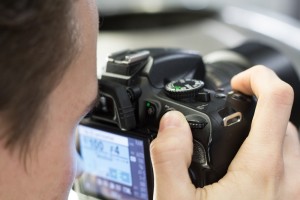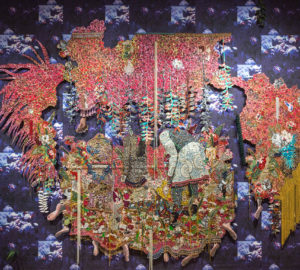Photography tip of the week: Understanding your camera
This quarter, my goal is to provide a series of tips that will help us all to become better photographers. This week, I will discuss the importance of understanding your own camera or the camera(s) you use regularly.
Whether it’s capturing still life indoors or taking motion shots of a tennis player dashing left to right, we all need to know how to adjust the camera settings in a timely fashion. Have you ever found yourself saying, “If only I could have captured that moment a fraction earlier”? This can be the cause of spending too much time looking down at the camera screen trying to figure out what settings to adjust.
Good photographers know their way around their tools inside out. This is necessary for a fast execution just in case you need to make adjustments when time matters the most. Depending on how comfortable you are with your camera, it shouldn’t take but a minute to change white balance, shutter speed, aperture and ISO. The faster we are able to change these settings, the more shots we can capture and the more setting combinations we can try. Digital cameras allow a faster rate of changing settings by possessing control dial buttons as well as other quick buttons on the exterior of the camera body. These buttons allow us to change settings while still looking through the viewfinder. This technique is highly efficient because your eyes are looking through the viewfinder, your index finger is still placed on the shutter button and your other fingers are free to adjust all the necessary changes by a few finger motions. A perfect example for changing camera settings in a few finger motions is the function of the main dial. When you begin to adjust this, the shutter speed changes depending on what direction you rotate the dial. There is also a quick Aperture and ISO button on some cameras as well. It really varies on what camera you have. Some finger gestures are slightly different depending on the camera, but I promise if you memorize these motions while keeping your eyes on the viewfinder, you’ll find yourself capturing more images in a lesser amount of time.

Time matters in many cases. Some of these cases include shooting in natural light, especially when the sun direction is moving fast. Another case includes the location of the subject. If your subject is moving, time is crucial when you want to achieve a specific position. Practice the quicker ways of changing your camera settings and you’ll notice the difference right away. Before I was comfortable with my camera and the settings, I often found myself spending too much time on the LCD screen and I missed many perfect moments that I was not able to achieve again. I’m sure we can all relate. If you still aren’t comfortable with your camera, don’t hesitate to pick the manual up and re-learn the full functionality of your camera.
The moment you are more comfortable with your camera, not only will you look more professional, you will also know what settings work for you depending on the situation because you’ll be able to toggle between many different combinations and choose the one that best fits your needs.



























